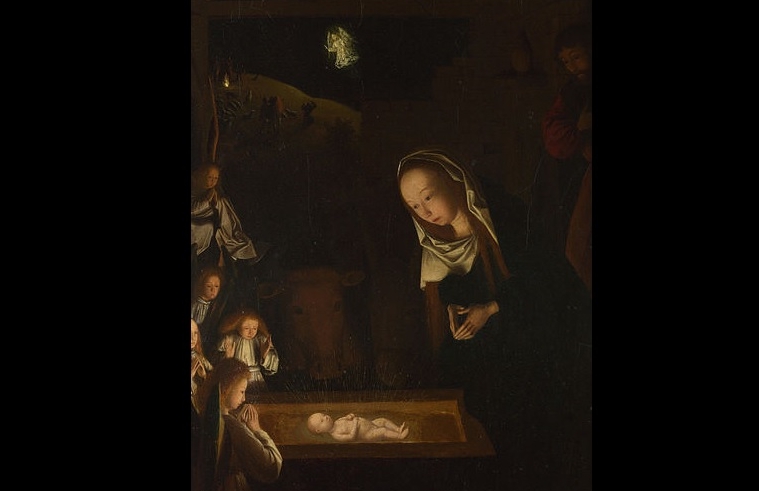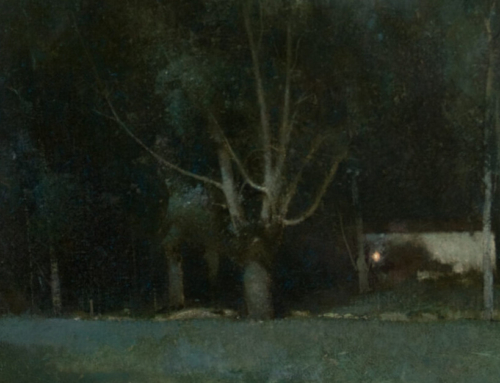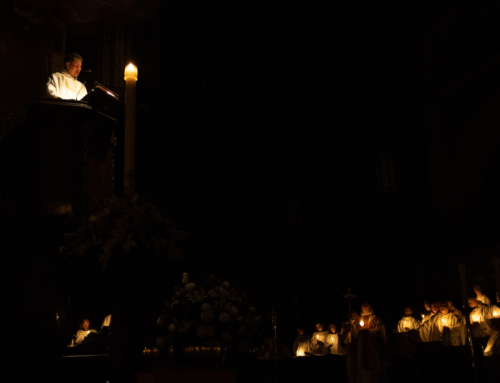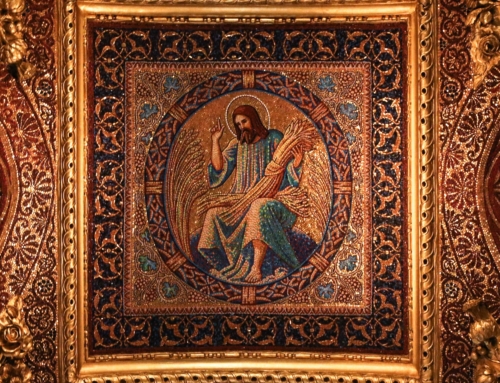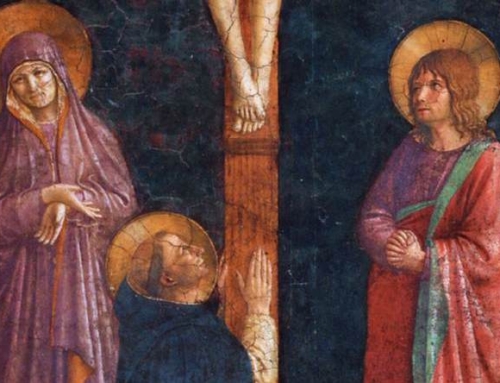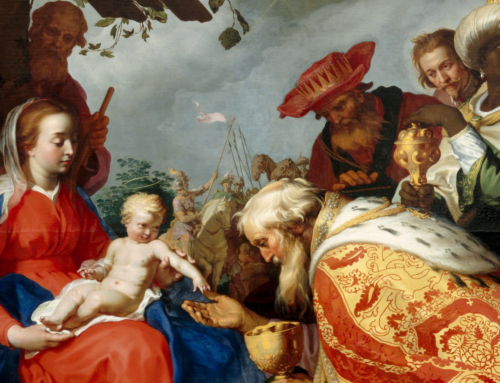The Sights and Sounds of Christmas:
The Nativity at Night by Geertgen tot Sint Jans, c. 1490
Portrayals of the Nativity in the visual arts have abounded since the fourth century, but Geertgen tot Sint Jans is widely accepted as having painted the first nocturnal representation in his work, The Nativity at Night.
With the bright light of Christ as the focal point, four angels look at the child lying in a manger with prayerful but anxious excitement (see Phil 3:20). They seem ready to bubble over in joyful praise! A single angel looks intently at Mary’s contemplative posture, while in the shadows of the stable even the animals, the cow and the ass, appear to recognize the momentous character of the sight before them. They look with reverence at the brilliant little baby as if they too are mesmerized by his glory. While the angels and shepherds evoke movement toward Jesus in the manger, the animals are reminiscent of the peace and stillness of the night as they stand in the recesses of Geertgen’s scene.
Outside, in the distance, the shepherds warm themselves by the fire as an angel proclaims, “to you is born this day in the city of David a Savior, who is Christ the Lord” (Lk 2:11). Christ came to save all of humanity, including the lowly, like the shepherds, as well as those of high stature, like the three kings who will come at the Epiphany (see Rm 8:19-21). Similarly, Christ was born for you and me. He knew each of us before we were formed in the womb and he loves us perfectly (Jer 1:4). How fitting that Jesus, a tiny infant, only asks that we love him in return! Your response and my response to his invitation have the power, by the grace of God, to change our lives and the world.
The main source of illumination in the tableau is the Christ Child. In this humble stable, Saint Ambrose explains, “he is brought forth from the womb but . . . flashes alive with heavenly light.” Those flashes of truth draw us to the Word of God that has the power to save our souls (Ja 1:21). Christ became man for this very end, our salvation. How humbling that God has done this for us!
Mary is depicted as observing this sacred moment in silence, as if she were pondering these things in her heart (Lk 2:19). Her face portrays a sense of puzzlement, prayerfulness, and humility, which the blessed infant returns with mutual love and affection. The connection between Mother and Child is marked by rays of light that emanate between their shining faces. Geertgen puts Christ as the focus of the painting with his Mother prominently fixated on him in meditative wonderment. She too is trying to understand the mysteries of the baby that she, through the Holy Spirit, has brought into the world. He looks knowingly and sympathetically into her heart, as if to remind her of the words of the angel Gabriel, “Do not be afraid, Mary,” (Lk 1:30). Only now, he says it differently: “Do not be afraid, Mother.”
Saint Joseph stands behind her as a pillar of support and consummate manliness, seemingly in his own state of wonderment. He was also told by an angel not to be afraid and that he should take Mary as his wife (Mt 1:20). Joseph reflects on that mandate as the shepherds approach to worship the Child. He takes responsibility for the care of his family, for that is what men do, yet it would be understandable if he felt apprehensive. Ready to give every ounce of himself to his family, he puts his right hand over his heart, placing his confidence in the Lord and knowing that God will provide for them in their time of need.
The Incarnate Lord brings peace and joy to a fallen world. Let us trust God as Mary and St. Joseph did and put Christ at the center of our lives, so that his light will reflect on the world around us. In this way, we participate in his earthly mission and join the choirs of cherubim and seraphim in proclaiming that our salvation was born on Christmas day. There is cause for rejoicing in the hope of our newborn Savior!
✠
Image: Geertgen tot Sint Jans, Nativity at Night

